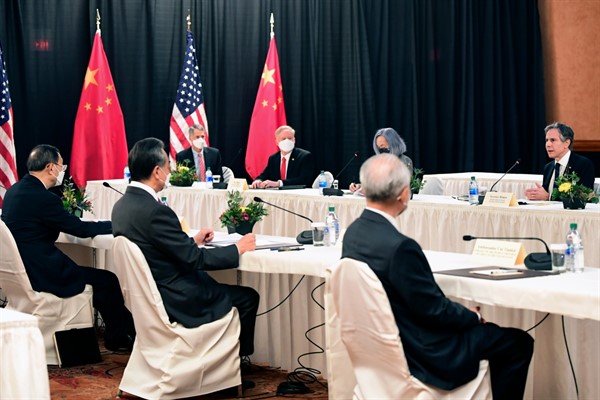Editor’s Note: Every Wednesday, WPR contributor Rachel Cheung and Assistant Editor Benjamin Wilhelm curate the week’s top news and expert analysis on China. Subscribers can adjust their newsletter settings to receive China Note by email every week.
Even the most optimistic observers had expected little to come out of last week’s U.S.-China summit in Alaska, where high-level officials from both sides met in person for the first time since President Joe Biden took office. But as the heated on-camera exchange that preceded the private discussions confirmed, not only will this rivalry remain, but relations that were strained under former President Donald Trump may further deteriorate in the years to come.
On the eve of the meeting, Washington had set its own confrontational tone by sanctioning 24 Chinese and Hong Kong officials for their role in rewriting the city’s election laws, which further erode Hong Kong’s autonomy. That followed a flurry of meetings that Secretary of State Antony Blinken and Secretary of Defense Lloyd Austin had held in Seoul and Tokyo, shoring up America’s two main military alliances in Asia, while Biden met with the leaders of Japan, India and Australia in the first online summit of the so-called Quad, to push back against China’s growing assertiveness in the region.

